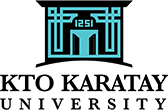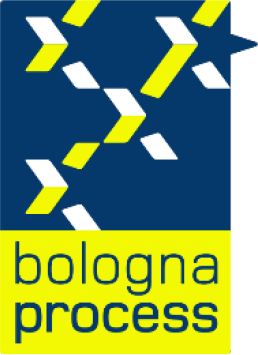Medical Imaging Techniques
Course Details

KTO KARATAY UNIVERSITY
Vocational School of Medical Services
Programme of Medical Imaging Techniques
Course Details
Vocational School of Medical Services
Programme of Medical Imaging Techniques
Course Details

| Course Code | Course Name | Year | Period | Semester | T+A+L | Credit | ECTS |
|---|---|---|---|---|---|---|---|
| 02930002 | Medical Imaging III | 2 | Autumn | 3 | 4+0+0 | 8 | 8 |
| Course Type | Compulsory |
| Course Cycle | Associate (Short Cycle) (TQF-HE: Level 5 / QF-EHEA: Short Cycle / EQF-LLL: Level 5) |
| Course Language | Turkish |
| Methods and Techniques | - |
| Mode of Delivery | Face to Face |
| Prerequisites | - |
| Coordinator | - |
| Instructor(s) | Lect. Mehmet ULUÇAM |
| Instructor Assistant(s) | - |
Course Instructor(s)
| Name and Surname | Room | E-Mail Address | Internal | Meeting Hours |
|---|---|---|---|---|
| Lect. Mehmet ULUÇAM | B-Z26 | [email protected] | 7356 | Tuesday 15:00-16:00 |
Course Content
Computerized tomography (CT) device, Head and neck CT imaging, Vertebra CT imaging, Thorax and abdominal CT imaging, Extreme CT imaging, CT angiography, Advanced computerized tomography methods, Structure of magnetic resonance imaging device, Cranial MRI, Neck MRG. Thorax MRI, Upper abdominal MRI, Lower abdomen MRI, Vertebra MRI, Upper extremity MRI. Lower extremity MRI, MR angiography, advanced magnetic resonance imaging techniques
Objectives of the Course
With this course, the student, in the Radiology unit; By preparing MRI and CT devices for radiographic examination in accordance with national and international standards, it is aimed to gain competencies related to obtaining radiography.
Contribution of the Course to Field Teaching
| Basic Vocational Courses | X |
| Specialization / Field Courses | X |
| Support Courses | |
| Transferable Skills Courses | |
| Humanities, Communication and Management Skills Courses |
Relationships between Course Learning Outcomes and Program Outcomes
| Relationship Levels | ||||
| Lowest | Low | Medium | High | Highest |
| 1 | 2 | 3 | 4 | 5 |
| # | Program Learning Outcomes | Level |
|---|---|---|
| P1 | Has the knowledge to evaluate and apply shooting positions related to the field of medical imaging techniques, technical infrastructure and physics principles of imaging devices, radiation safety and radiation protection rules, pharmacological structures of contrast agents, side effects and risk factors, and uses applied knowledge. | 5 |
Course Learning Outcomes
| Upon the successful completion of this course, students will be able to: | |||
|---|---|---|---|
| No | Learning Outcomes | Outcome Relationship | Measurement Method ** |
| O1 | Ability to express the necessary theoretical knowledge in imaging processes in the field of medical imaging techniques. | P.1.1 | 1 |
| O2 | Ability to understand the application requirements of imaging processes in the field of medical imaging techniques by associating them with theoretical foundations. | P.1.2 | 1 |
| O3 | Ability to apply theoretical knowledge of imaging processes in the field of medical imaging techniques on the patient. | P.1.3 | 1 |
| O4 | Ability to compare and analyze the application results of different approaches in imaging processes in the field of medical imaging techniques. | P.1.4 | 1 |
| ** Written Exam: 1, Oral Exam: 2, Homework: 3, Lab./Exam: 4, Seminar/Presentation: 5, Term Paper: 6, Application: 7 | |||
Weekly Detailed Course Contents
| Week | Topics |
|---|---|
| 1 | Structure and historical development of CT |
| 2 | Sections of CT |
| 3 | Operations Performed on CT Image |
| 4 | Head Neck CT Examinations |
| 5 | Thorax, Upper and Lower Abdomen CT Imaging |
| 6 | Vertebra, Upper and Lower Extremity CT Imaging |
| 7 | CT Angiography |
| 8 | Midterm Exam |
| 9 | MR Yapısı ve Tarihsel Gelişimi |
| 10 | MRI Basic Components and MRI Safety |
| 11 | Head and Neck Magnetic Resonance Imaging |
| 12 | Vertebra, Lower and Upper Extremity Magnetic Resonance Imaging |
| 13 | Whole Body Magnetic Resonance Imaging |
| 14 | Magnetic Resonance Angio Examinations |
Textbook or Material
| Resources | Tekin, H.O., Dündar, M. (2018). Magnetic Resonance Imaging Techniques and Basic Principles. Kongre Bookstore. Antalya |
| Tekin, H.O., Dündar, M. (2018). Magnetic Resonance Imaging Techniques and Basic Principles. Kongre Bookstore. Antalya |
Evaluation Method and Passing Criteria
| In-Term Studies | Quantity | Percentage |
|---|---|---|
| Attendance | - | - |
| Laboratory | - | - |
| Practice | - | - |
| Field Study | - | - |
| Course Specific Internship (If Any) | - | - |
| Homework | - | - |
| Presentation | - | - |
| Projects | - | - |
| Seminar | - | - |
| Quiz | - | - |
| Listening | - | - |
| Midterms | 1 | 40 (%) |
| Final Exam | 1 | 60 (%) |
| Total | 100 (%) | |
ECTS / Working Load Table
| Quantity | Duration | Total Work Load | |
|---|---|---|---|
| Course Week Number and Time | 14 | 4 | 56 |
| Out-of-Class Study Time (Pre-study, Library, Reinforcement) | 4 | 20 | 80 |
| Midterms | 1 | 44 | 44 |
| Quiz | 0 | 0 | 0 |
| Homework | 0 | 0 | 0 |
| Practice | 0 | 0 | 0 |
| Laboratory | 0 | 0 | 0 |
| Project | 0 | 0 | 0 |
| Workshop | 0 | 0 | 0 |
| Presentation/Seminar Preparation | 0 | 0 | 0 |
| Fieldwork | 0 | 0 | 0 |
| Final Exam | 1 | 60 | 60 |
| Other | 0 | 0 | 0 |
| Total Work Load: | 240 | ||
| Total Work Load / 30 | 8 | ||
| Course ECTS Credits: | 8 | ||
Course - Learning Outcomes Matrix
| Relationship Levels | ||||
| Lowest | Low | Medium | High | Highest |
| 1 | 2 | 3 | 4 | 5 |
| # | Learning Outcomes | P1 |
|---|---|---|
| O1 | Ability to express the necessary theoretical knowledge in imaging processes in the field of medical imaging techniques. | 5 |
| O2 | Ability to understand the application requirements of imaging processes in the field of medical imaging techniques by associating them with theoretical foundations. | 5 |
| O3 | Ability to apply theoretical knowledge of imaging processes in the field of medical imaging techniques on the patient. | 5 |
| O4 | Ability to compare and analyze the application results of different approaches in imaging processes in the field of medical imaging techniques. | 5 |
